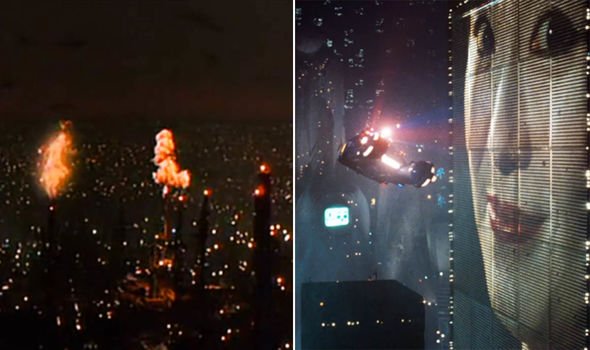The 1982 film’s prediction of artificial intelligence, humanity and sexism today
Blade Runner (1982), directed by Ridley Scott, is one of my favourite films of all time and has undeniably impacted science fiction as a whole. Where would we be without those iconic shots of Los Angeles and those smokey rooms reminiscent of film noir? Blade Runner’s impact can be seen in films like The Terminator or The Fifth Element, and so many more. Don’t forget the film’s quintessential question, which seems to become more significant as technology progresses: what makes us human?
The dark, rainy world is brought to life with neon lights and glowing umbrellas. Blade Runner was a look at the 21st century if humanity remained unchecked and exploited its resources with no thought of future generations. There’s no nature in Blade Runner’s LA, just crowded streets and huge buildings. The average person has never seen a real animal or plant. This may not be our world in 2019, but if we can learn anything from this film or the news, it’s that we may be on our way.
There is a bold use of colours while remaining faithful to the film noir aesthetic by contrasting between dark and bright areas of the shot, whether we’re on the streets with Rick Deckard or climbing through abandoned buildings. Even the replicants in the film (the bioengineered people used for labour) are distinguished from humans by the cinematography. In certain scenes, replicants’ eyes glow, which never happens to any human characters. Jordan Cronenweth, the film’s cinematographer, achieved this effect by placing a two-way mirror and a dim light underneath the camera to reflect said light into the actors’ eyes.
The screenplay by Hampton Fancher and David Peoples is great in many ways, but it’s not without issues. On the one hand, the film is kind of basic and a little slow. When you break it down, the plot is about an ex-cop who has to murder four escaped replicants. Then he does it.
However, it has great world-building and examines some fascinating characters, leaving you on the edge of your seat by the finale. The ambiguous ending incites interesting conversation about artificial intelligence and humanity.
There are definite elements of Blade Runner where it loses points for me. Specifically, I’m referring to its outdated treatment of women. The “love” meant to exist between the two main characters is practically nonexistent, and what is essentially a scene depicting sexual assault is set to sensual saxophone music. As if it’s supposed to be romantic. In this particular scene, Deckard is essentially manipulating the female lead, Rachael, into telling him she wants him. It was clear that Rachael didn’t want to do anything with Deckard, but he switched the situation onto her.
Today, this speaks volumes to what is happening in the world with the fairly recent emergence of the #MeToo movement, and even resembles real experiences women have faced. There is a promotion of the idea that men can control women to do what they please. In Blade Runner as a whole, the female characters have no real autonomy as they are replicants. Although it’s an extremely uncomfortable scene to watch today, I can understand that it’s a product of its time. Having been written in the late 70s and early 80s, it was smack-dab in the middle of an overwhelmingly misogynistic time in Hollywood. This scene serves as a reminder that we’ve come a long way in how women are treated in film, but frankly, we still have a very long way to go.
Blade Runner engulfs you into each frame and Scott creates a beautiful and dangerous world you want to explore. All of the characters are kept at a distance where you can understand their motives but leaves room for ambiguity. Blade Runner’s action-movie plot and oppressive treatment of women is where it loses me, but has had an undeniable impression on science fiction with its cinematography, production design and enigmatic ending.




